The boutique resort “The Tiing” on Bali’s north coast is an unusual jewel. Architect Nic Brunsdon surprises with a purist combination of bamboo and concrete.
When reading the guest reviews, wanderlust sets in. Although it only opened in 2019, “The Tiing” has already received countless top ratings. The fact that the journey to Bali takes another two and a half hours after landing on the island does not dampen the enthusiasm. After all, there is something special on offer for those who take on the winding journey through the lush Balinese landscape. For on the quiet north coast, Australian architect Nic Brunsdon has created an extraordinary project in bamboo and concrete.
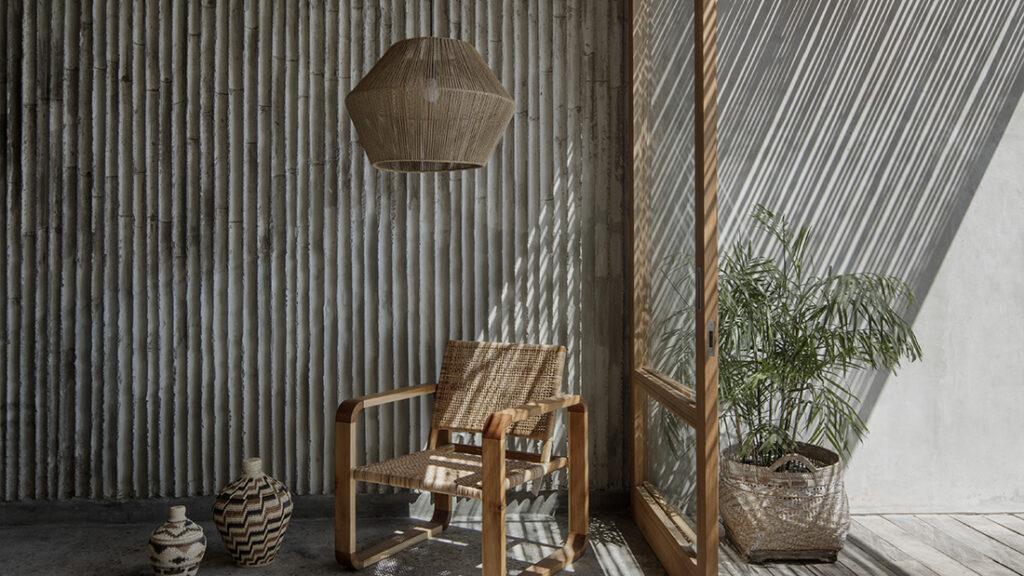
What motivated Brunsdon to create his unusual concept was, among other things, the location of the resort. On the one hand, it had to be a resort that would attract guests to prefer “The Tiing” to the much more easily accessible tourism centres on the south coast. On the other hand, it made sense to use traditional materials and building techniques in this secluded location. The new building had to be robust, but also fit the cultural and local context. On top of that, it had to make use of existing resources and take into account the special climate of the region.
Robust and locally typical
Building with concrete and bamboo is typical for Bali. Both are abundant on this beautiful island in the Indian Ocean, which belongs to Indonesia. Thus, a series of bamboo-shaped concrete walls were built on site, creating optimal conditions both inside and between the units. And these were designed to emphasize the beauty of the mountains and the ocean like a frame.
It was obvious that a clean finish in a tropical climate would require a lot of conservation work. Therefore Nic Brunsdon chose a different approach. The architect took the expected weathering into account and made it the leitmotif of “The Tiing”: the natural effect of weather conditions, which changes the buildings, now adds to the special character of the complex.
Smooth concrete walls and wood alternate. And bamboo often comes into play as concrete formwork. The patina underlines the texture and shape of the bamboo and ensures harmony with the natural environment.
The walls shear out at the ends, reflecting the style of the portals typical of Bali. These portals are artfully decorated totems, which are meant to motivate eyes and mind to continue following the paths taken. In “Tiing” they are architectural elements that act like funnels: they draw the gaze of the guests to both the sea and the mountains.
We thought it was essential to draw attention to both – as part of the earthy travel experience.
Nic Brunsdon
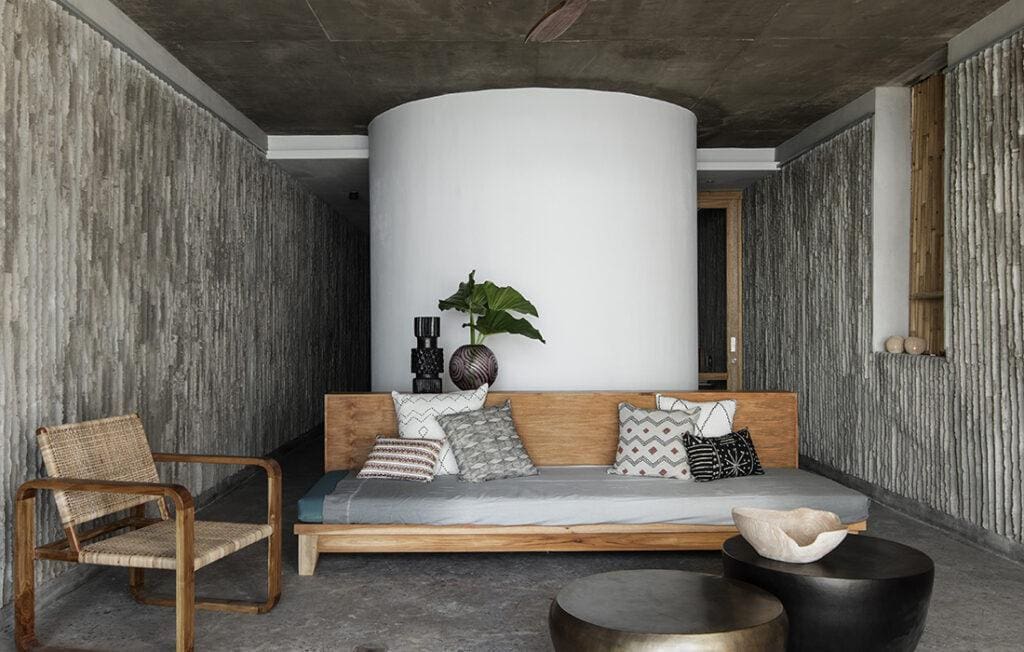
As a counterpoint to the dense, green jungle all around, Brunsdon and his team added a pool framed in red to “The Tiing”. Although only partially visible from the access area, the pool now appears to newcomers as the energy centre of the facility.
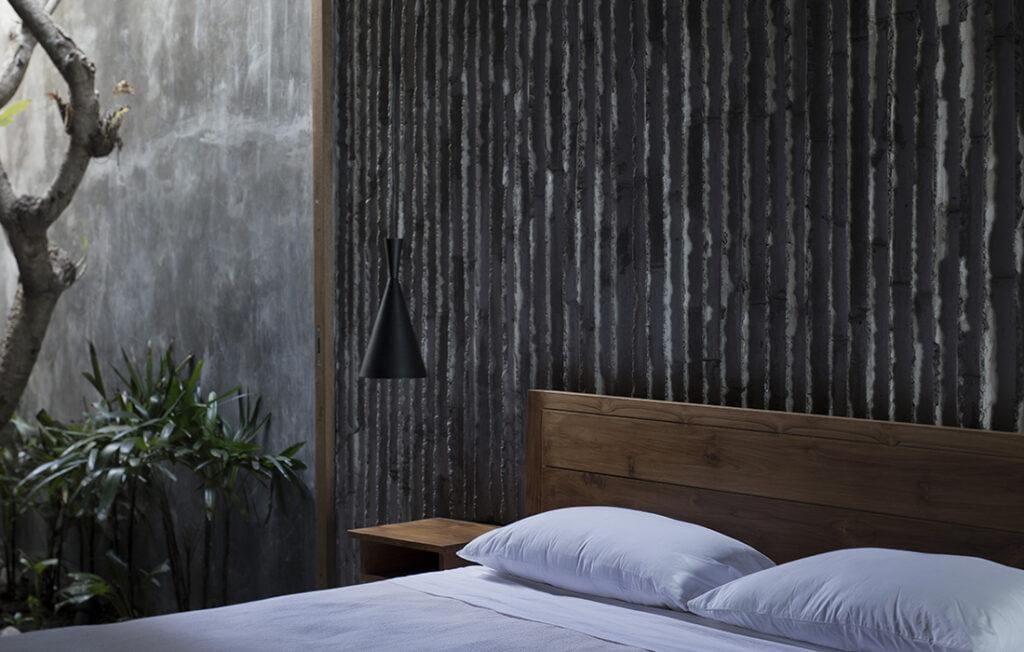
“The Tiing as the “frame” of nature
We paid attention to the height of the site. And how the water of the pool and the ocean would layer itself in relation to the horizon.
Nic Brunsdon
The strategy of creating a project here that rewards the “intrepid” is underlined by the central pool. In other words, anyone who takes the long journey can indeed expect the extraordinary.
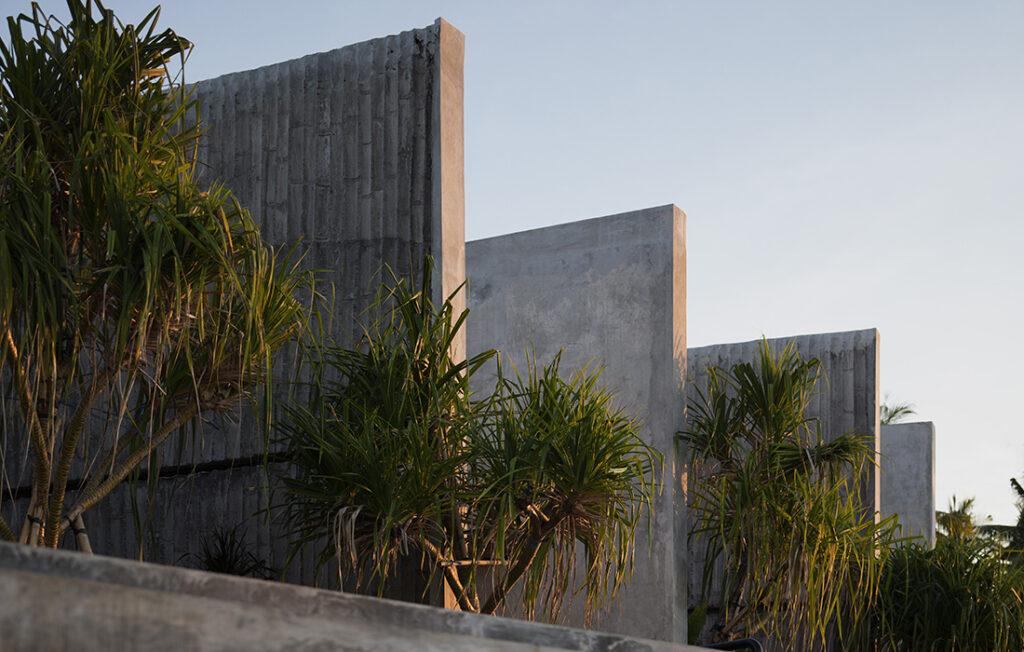
“The Tiing” consists of seven blocks, each with two floors. In each of them there are two suites – one on the ground floor and another on the upper floor. Each unit has a living room and bedroom and its own mini pool.
And each offers two contrasting views:
one of the ocean and the other of the jungle.
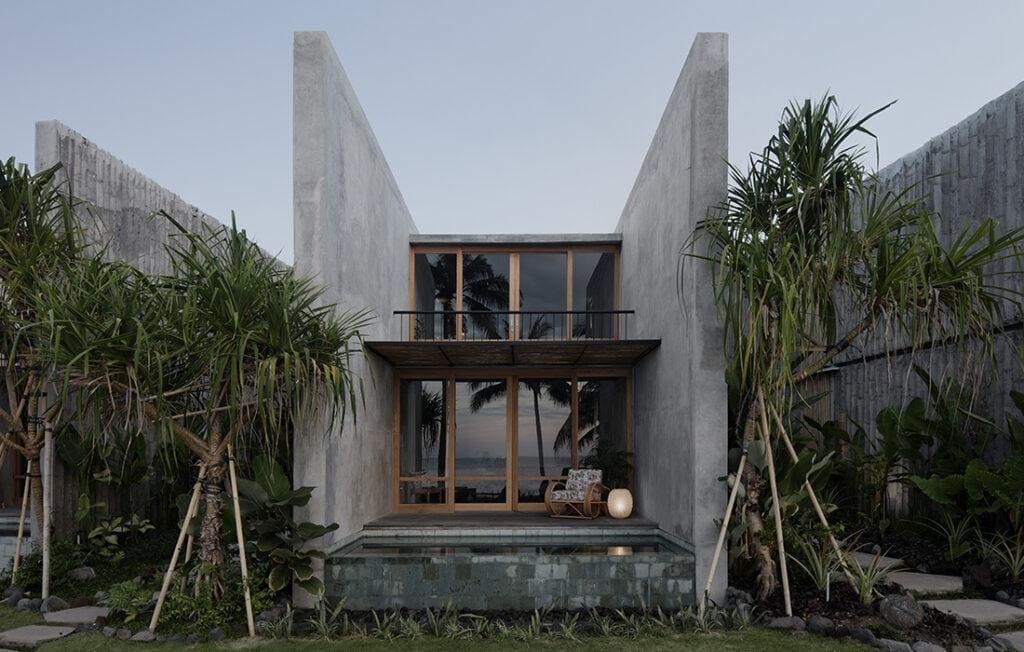
A special feature of the otherwise unusually unadorned, straight-lined hotel complex are the round bathrooms that are located in the centre of the suites. By skilfully staggering the building structure, Brunsdon has turned these bathrooms into special oases of relaxation: each of them has a ceiling window that brings daylight into the isolated space and offers a clear view of the sky.
Architect Brunsdon, who cooperated with the Indonesian studio Manguning for “The Tiing”, describes his concept as “rough regionalism”.
The materiality aims to work with the appropriate building techniques and resources in the local context and climate.
Comfort without “frills”
Those who appreciate simplicity and prefer to focus on secluded, magnificent nature rather than on luxurious hotel design will enjoy this resort. Instead of the maximalism and “smart” technologies with which other new hotels are increasingly scoring points, minimalism rules here, which – although highly comfortable – places the beauty of the landscape at the centre of attention.
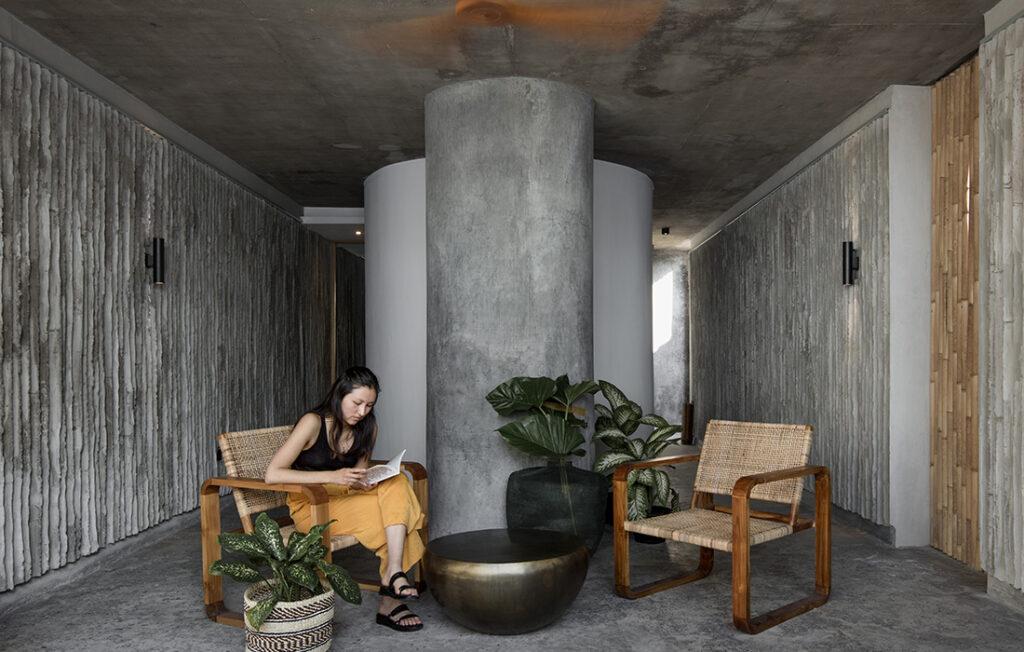
In terms of service, range and culinary delights, the “Tiing” – according to the many superlatives in the ratings of previous guests – is in any case spectacular. And the idea of relying entirely on concrete and bamboo lends the architecturally unusual complex a distinctively tart, enticingly earthy charm.

Text: Elisabeth Schneyder
Photos: Ben Hosking für Brunsdon

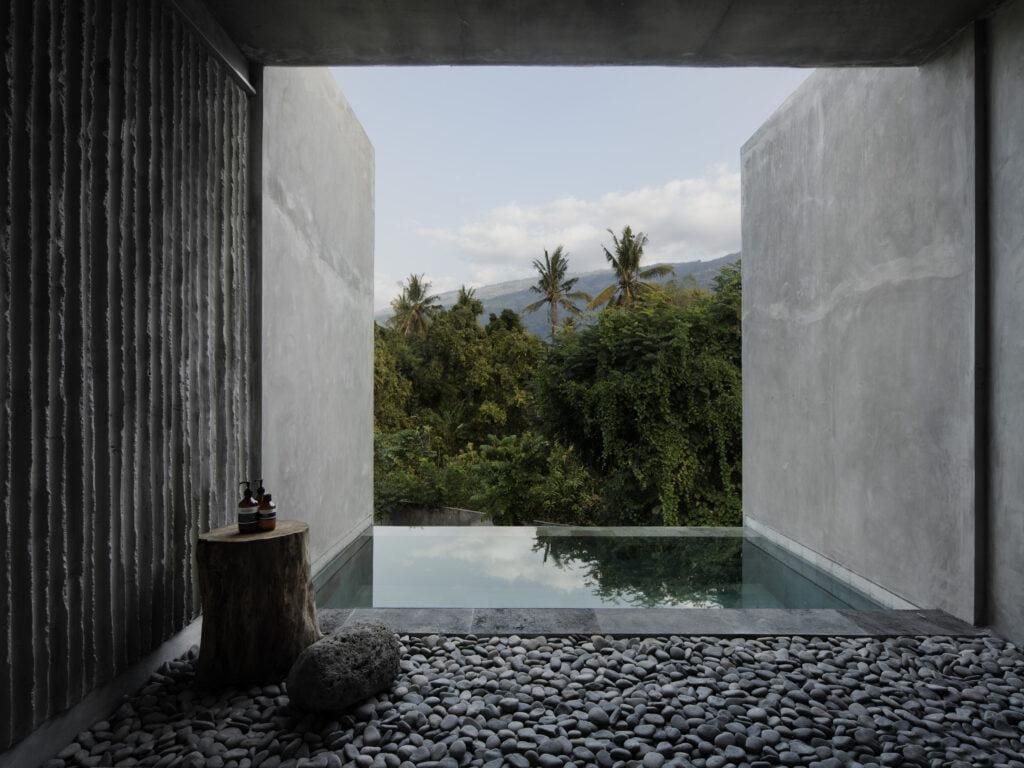
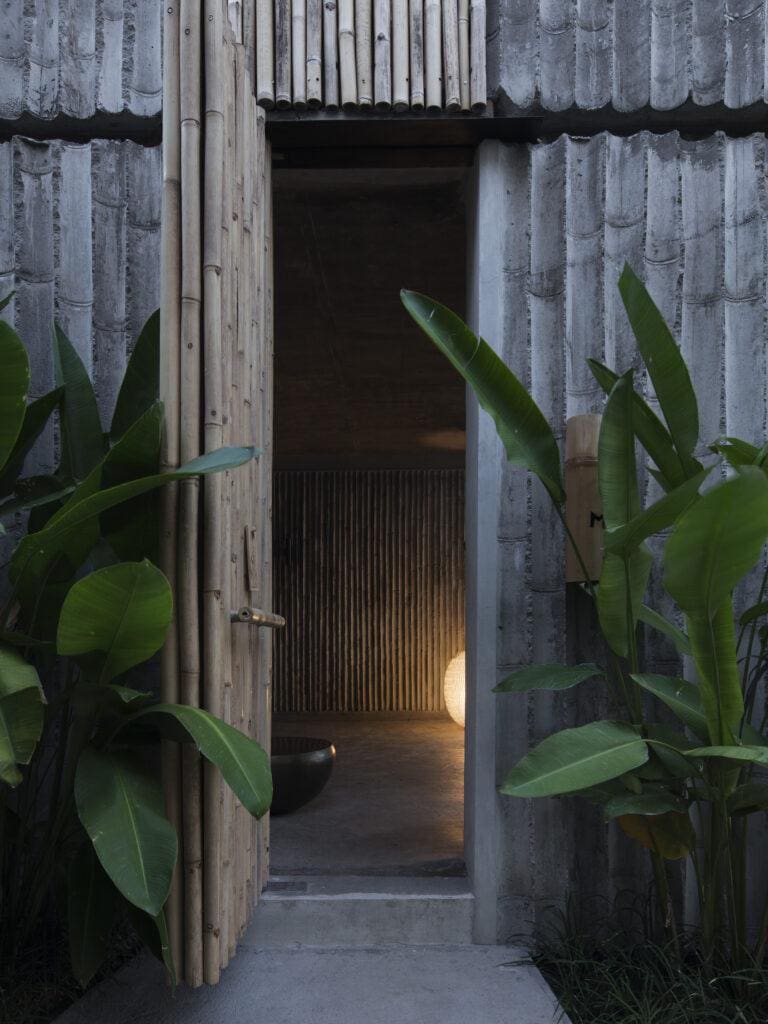
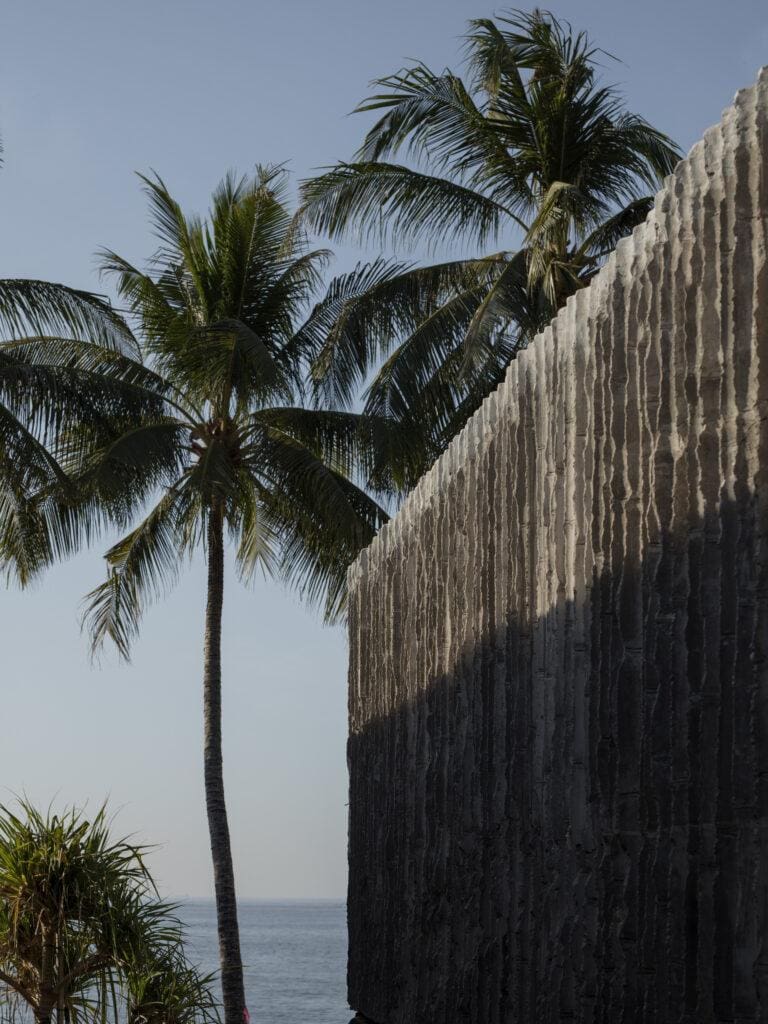
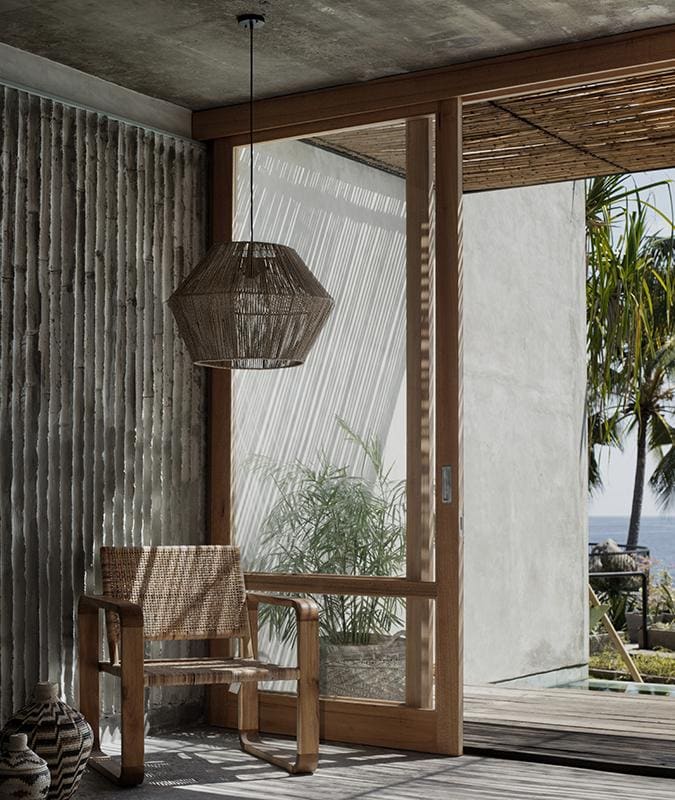
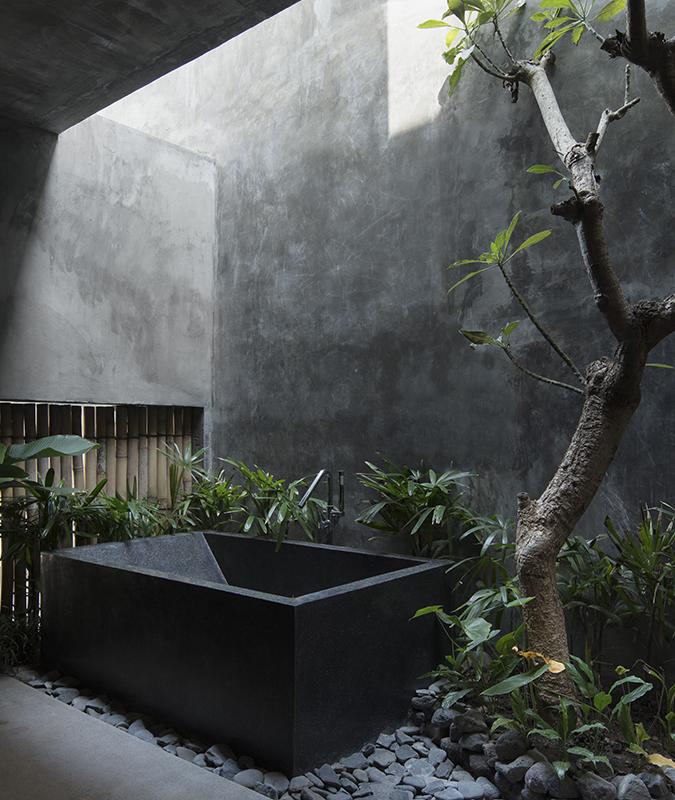
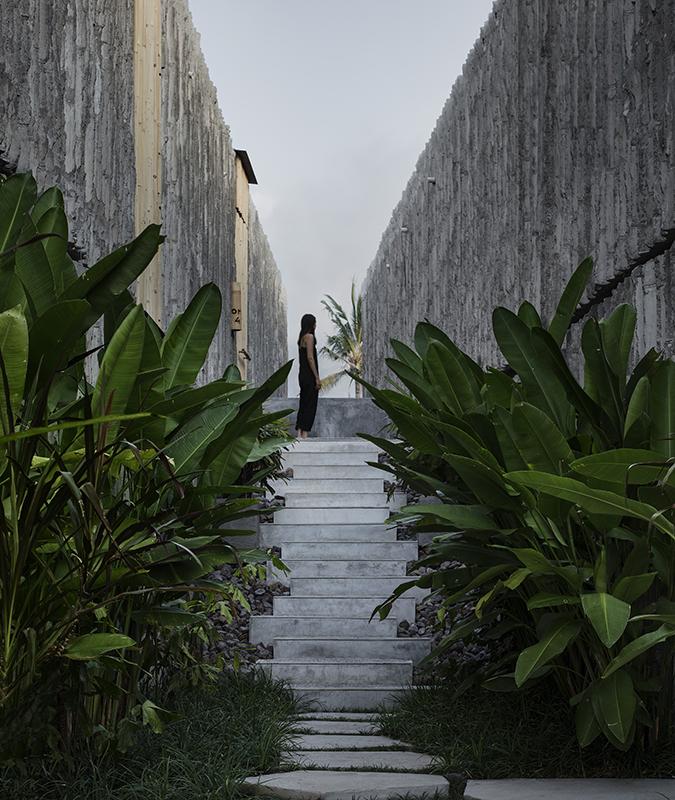
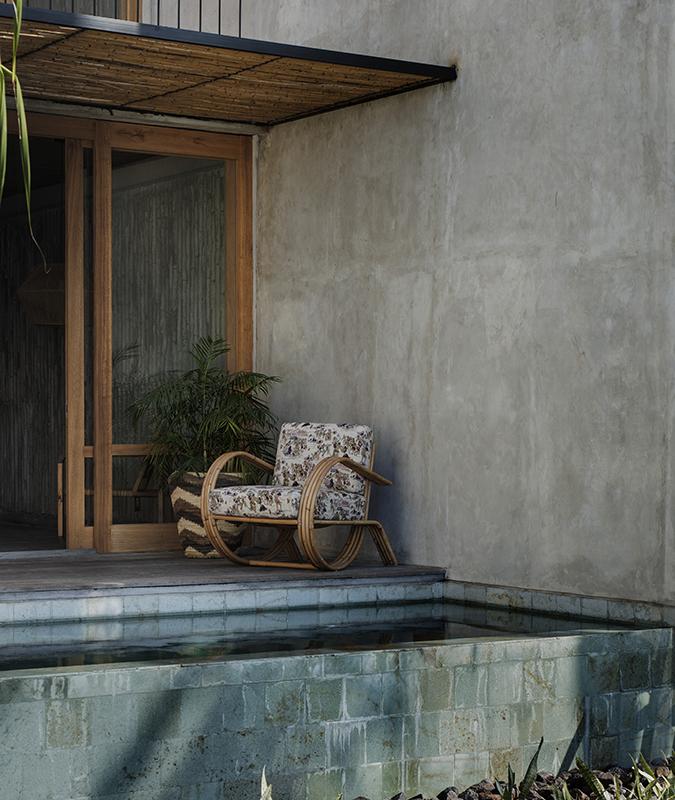
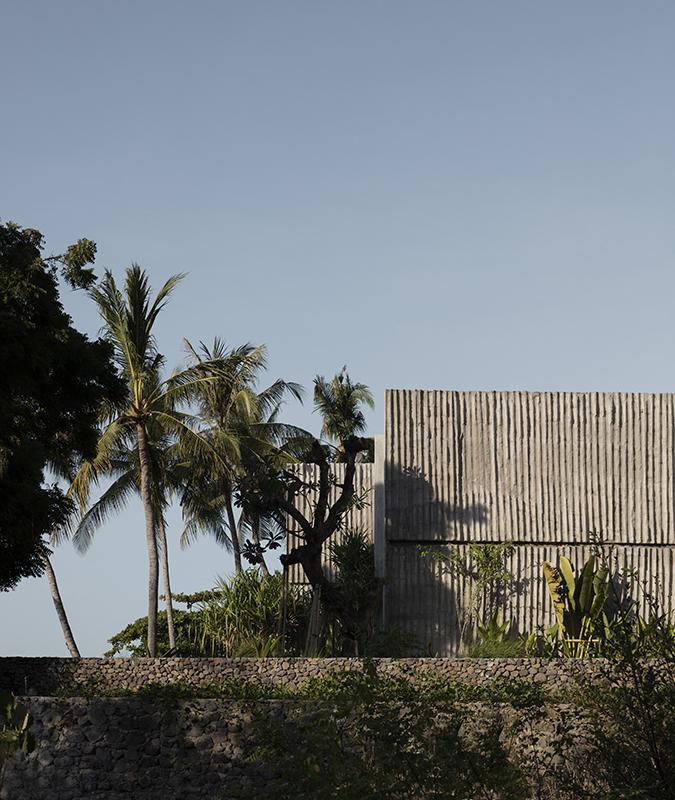
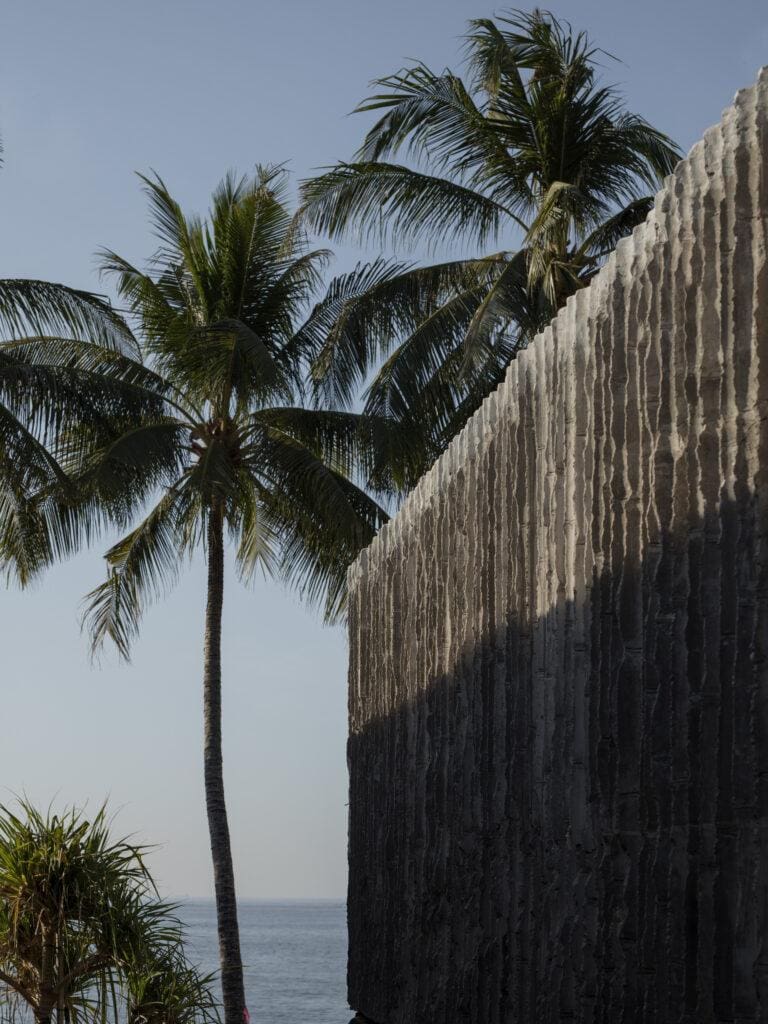
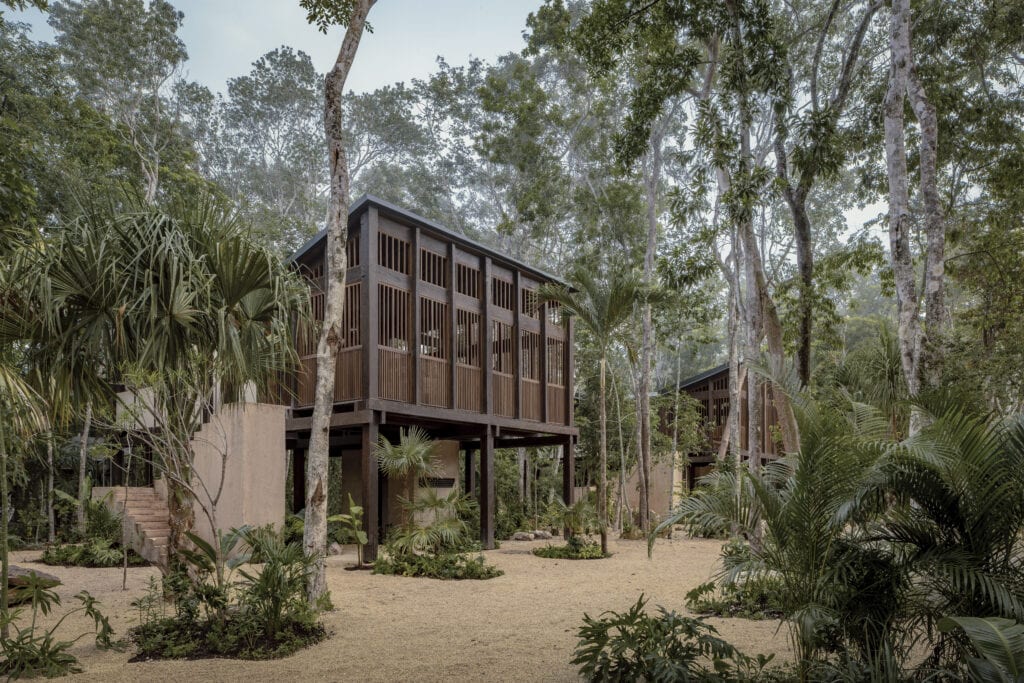
iThere are no comments
Add yours